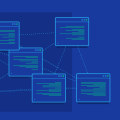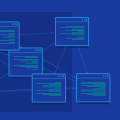Error logging and debugging strategies are an essential part of software development, especially when it comes to avoiding common coding mistakes. Knowing how to identify and address errors quickly Error logging and debugging strategies are an essential part of software development, especially when it comes to avoiding common coding mistakes. Knowing how to identify and address errors quickly using a debugger tool can save time and money in the long run. This article will provide an overview of the various logging and debugging strategies used in software development, from the basics to more advanced techniques. It will explain how to use logs to identify and troubleshoot errors, and will provide tips for debugging code more efficiently. By the end of this article, you'll have a better understanding of how to debug software using a debugger tool, reducing the amount of time spent on tracking down errors. Error logging and debugging strategies are an essential part of software development, especially when it comes to avoiding common coding mistakes. Knowing how to identify and address errors quickly using a debugger tool can save time and money in the long run. This article will provide an overview of the various logging and debugging strategies used in software development, from the basics to more advanced techniques. It will explain how to use logs to identify and troubleshoot errors, and will provide tips for debugging code more efficiently. By the end of this article, you'll have a better understanding of how to debug software using a debugger tool, reducing the amount of time spent on tracking down errors.
Error Logging Methods
Error logging is an essential part of debugging and troubleshooting software issues. There are several methods available for logging errors, such as using a log file, using an error tracking service, or using a debugging tool.Log files are text files that contain information about the state of the system when an error occurs. They can provide insights into what caused the error and may include helpful stack traces and other data that can be used to identify and solve the problem. Logging errors to a log file is easy to set up, but it can be difficult to parse through large log files to find the relevant information. An error tracking service is another way to log errors.
These services allow developers to track and monitor errors in real-time. They provide rich insights into the root cause of the errors and can help developers quickly identify and solve issues. Debugging tools are also useful for logging errors. They provide detailed information about the state of the system at the time of the error and can provide helpful stack traces and other data.
Debugging tools are often used in combination with log files and error tracking services to provide a comprehensive view of the system state when an error occurs.
Debugging Tools
Debugging tools are powerful tools that can help developers identify and solve software issues. There are a variety of debugging tools available, from the command line to integrated development environments (IDEs). By using debugging tools, developers can analyze code and detect errors faster and more efficiently. When looking for debugging tools, it's important to find one that fits the language and technology stack you're working with.For example, if you're writing Java code, then a Java debugging tool like Eclipse Debugger or IntelliJ Debugger is a good option. For JavaScript projects, you may want to use a browser-based debugging tool like Chrome DevTools or Firefox Developer Tools. Once you've selected the right debugging tool for your project, you can use it to analyze your code and detect errors. The debugging tool will typically display the code in an easy-to-read format and highlight any potential issues.
It may also provide useful information like variable values, which can help you pinpoint exactly where an error is occurring. Debugging tools also allow you to set breakpoints, which pause the execution of your code at certain points. This allows you to inspect the state of the program at that point and view the values of variables and objects. You can then use this information to diagnose the cause of any issues.
By leveraging debugging tools, developers can quickly identify and solve software issues. However, it's important to remember that debugging tools can only help you find errors; they can't fix them for you. Once you've identified an issue, you'll still need to manually fix it yourself.
Best Practices for Debugging Code
Debugging code can be a complicated and time-consuming process. To ensure that debugging is done efficiently and effectively, there are a few best practices to keep in mind.Writing robust tests is a key part of debugging code, as it can help identify issues quickly and easily. Logging errors correctly can also help pinpoint issues and track down long-term problems. Lastly, using a step-by-step approach when debugging code can help avoid confusion and make the process easier. When writing tests for code, make sure to create unit tests for each module. This means that each module should be tested separately, and any errors should be identified and addressed as soon as possible. Writing robust tests is a key part of debugging code, as it can help identify issues quickly and easily. Logging errors correctly can also help pinpoint issues and track down long-term problems. Lastly, using a step-by-step approach when debugging code can help avoid confusion and make the process easier. When writing tests for code, make sure to create unit tests for each module. This means that each module should be tested separately, and any errors should be identified and addressed as soon as possible.
This will ensure that the code is working correctly and any potential issues can be identified quickly. Additionally, it's important to test the code in different scenarios and on different platforms to ensure it's working properly in all cases. Logging errors correctly is also essential for debugging code. By recording detailed logs of every error, developers can quickly identify problems and determine what caused them. Additionally, logging errors correctly helps to track down long-term issues, as it can provide insight into how errors develop over time.
Using logging best practices, such as providing detailed messages with each log entry, can help ensure that errors are logged correctly. Finally, it's important to use a step-by-step approach when debugging code. This means that each step should be taken one at a time, so that issues can be identified quickly and easily. Additionally, it's important to document each step in the debugging process so that any progress made can be tracked. By following these best practices, debugging code can be done effectively and efficiently.
Troubleshooting Tips
Troubleshooting TipsWhen an issue arises, it is important to have a clear plan of action for troubleshooting the error.There are several steps that can be taken to help identify and resolve an issue quickly. Here are some tips for troubleshooting errors:1.Check the server logs to identify any errors or warnings that may provide clues as to the source of the issue.2.Replicate the issue by re-running the same code with different data sets to see if the issue can be reproduced.3.Research the error online, as there may be documentation or forums where other users have had a similar issue and posted solutions.4.Test the code line by line to identify the source of the error.5.Use debugging tools to set breakpoints, and step through the code to identify issues.
Debugging Strategies
Debugging Strategies are essential for identifying and resolving software issues. There are several methods for logging and debugging errors, and this guide will explore the different strategies for debugging code. One of the most useful methods for debugging errors is to use a debugger. A debugger is a tool that allows developers to step through code line by line, examining values, variables, and functions to find the source of the error.This can be especially helpful when trying to identify and solve complex software issues. Another strategy for debugging errors is to use breakpoints. Breakpoints are points in a program where execution will be paused, allowing the developer to examine values and variables. This is useful for quickly identifying the source of an error without having to step through code line by line. Finally, developers can use stepping through code as a debugging strategy. This involves running the program line by line, examining values and variables as each line is executed.
This allows developers to identify and fix errors quickly, without having to set breakpoints. In conclusion, error logging and debugging strategies are essential for identifying and solving software issues. By using a debugger, breakpoints, or stepping through code, developers can quickly identify and resolve software issues. Error logging and debugging strategies are essential for ensuring software issues are identified and solved quickly. Good logging and debugging practices can help developers to identify and fix errors quickly and efficiently. Error logging methods such as logging application exceptions, system events and user actions can help in troubleshooting.
Debugging strategies such as log analysis, debugging tools and debugging techniques can help to pinpoint the cause of the error. It is also important to understand best practices for logging errors and debugging code, so that errors can be detected and resolved in a timely manner. In summary, error logging and debugging strategies play an important role in software development. By using the right strategies, developers can identify and fix errors quickly and efficiently.











